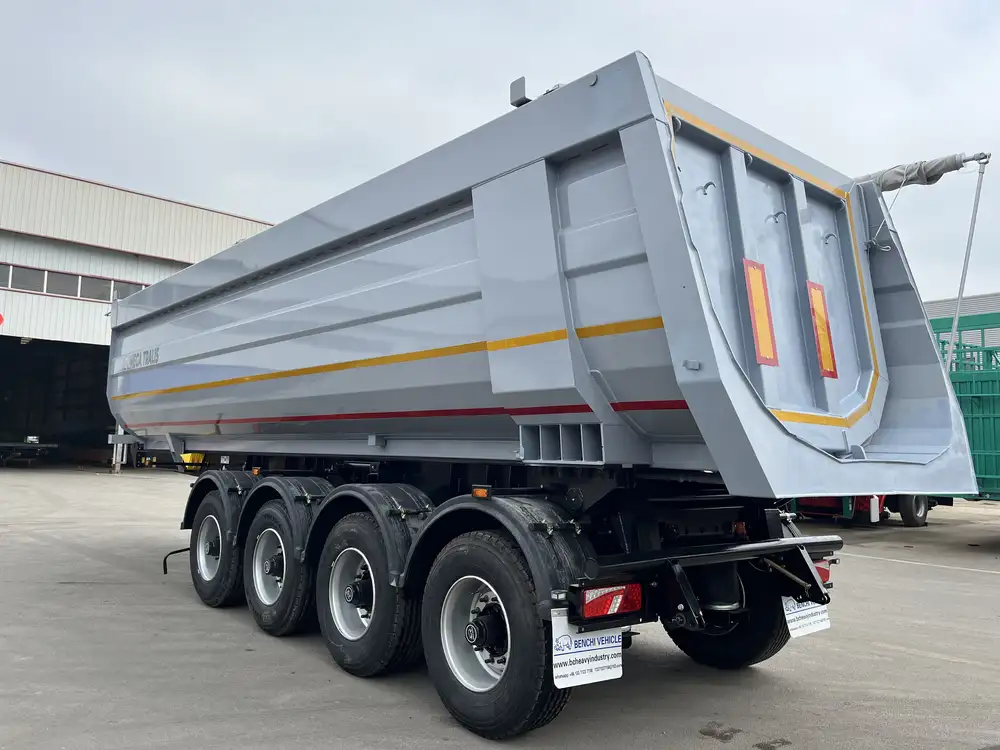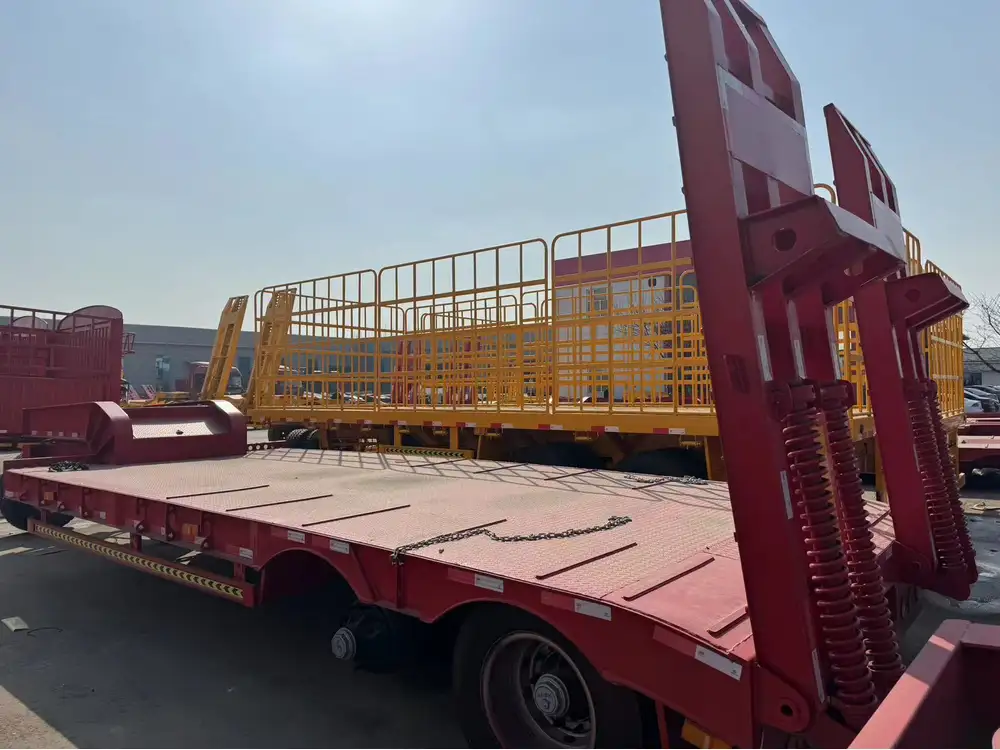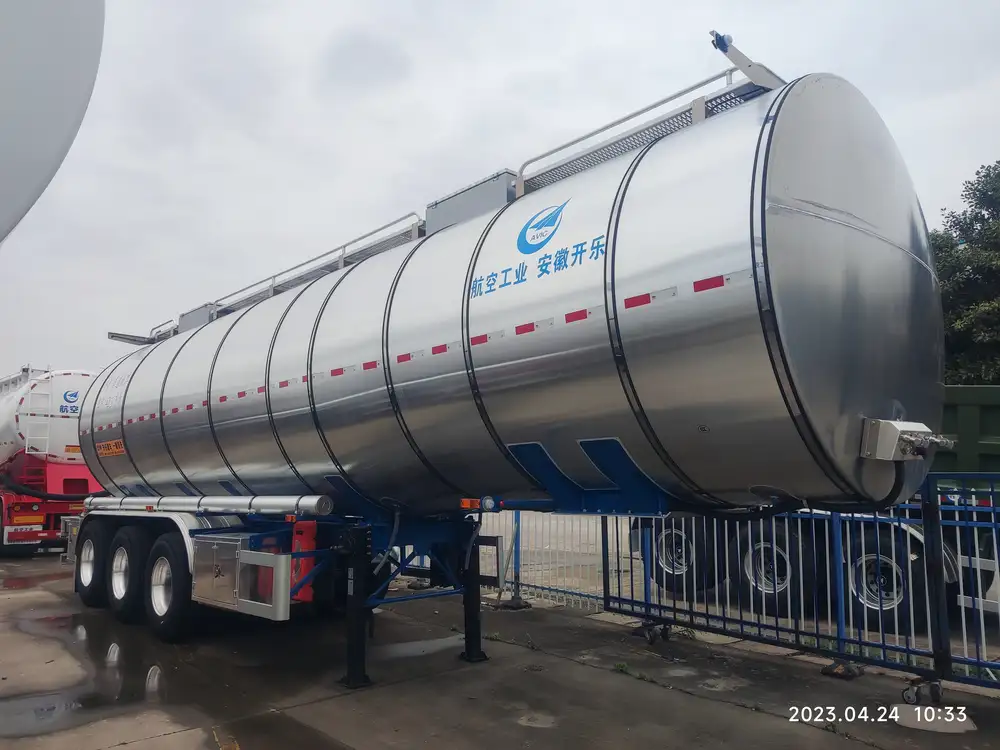Adjusting the tension on semi truck trailers is crucial for ensuring optimum performance, safety, and longevity of the trailer. An incorrectly adjusted tension can lead to various issues, including uneven weight distribution, increased wear on tires, and compromised vehicle stability. In this article, we will explore the detailed process of adjusting tension, delve into the importance of proper tension settings, and present useful tips and tricks to maintain your semi truck trailer effectively.
Understanding the Importance of Trailer Tension Adjustment
Adjusting the tension on your semi truck trailer is not merely a maintenance chore; it’s a fundamental aspect of trailer operation that influences road safety and transportation efficiency. Here are some key points that highlight the significance of this adjustment:
| Aspect | Effect of Proper Adjustment | Consequences of Poor Adjustment |
|---|---|---|
| Weight Distribution | Ensures even load distribution | Causes uneven tire wear and reduced stability |
| Braking Performance | Enhances stopping power and control | Increases stopping distance and potential for accidents |
| Tire Longevity | Reduces unnecessary tire stress | Leads to premature tire wear and replacement costs |
| Fuel Efficiency | Optimizes air resistance and drag | Causes higher fuel consumption and costs |
| Overall Safety | Provides better stability and handling | Increases risk of accidents and load spills |
Step-by-Step Process for Adjusting Trailer Tension

Tools and Equipment Needed
Before proceeding, ensure you have the following tools at your disposal:
- Torque wrench
- Adjustable wrench
- Measuring tape
- Hydraulic lift or jack
- Safety gloves and goggles
Step 1: Prepare the Trailer
Begin by placing the semi truck on a level surface. It’s essential to engage the parking brake to prevent any movement during the adjustment process. If your trailer has a lightweight load, consider unloading it for more accurate tension adjustment.
Step 2: Measure Current Tension
Utilize the measuring tape to assess the existing tension from the frame to the axle. Having a baseline measurement gives you a reference point for the adjustments that follow.

Step 3: Check Manufacturer Specifications
Consult your trailer’s user manual to identify the optimum tension settings specified by the manufacturer. Knowing the correct measurements is vital for achieving optimal performance.
Step 4: Adjusting Tension
For Spring Brake System:
- Locate the Spring Brake Adjusters: These are usually found on the brake chamber or at the rear axle.
- Turn the Adjuster: Use the adjustable wrench to rotate the adjusting bolt clockwise until the desired tension is reached. Ensure to make small adjustments, measuring frequently until you hit the manufacturer’s spec.
- Test the Brake Functionality: After adjusting, press down the brake pedal, and ensure the brakes engage smoothly without any stuttering.

For Air Brake System:
- Check the Air Pressure: Ensure your air supply is adequate, typically between 90-120 PSI.
- Locate the Pressure Adjustment Valve: It can typically be found near the rear or the main control panel.
- Adjust Accordingly: Rotate the adjustment knob to increase or decrease the air pressure within the system, maintaining caution not to exceed manufacturer limits.
Step 5: Re-Measure Tension Levels
Post-adjustment, use your measuring tape again to confirm that the new tension aligns with those set forth in the manufacturer’s manual. This is paramount, as failure in this step could result in the need for re-adjustments shortly down the line.
Step 6: Test Drive
Next, take the semi truck trailer on a short, controlled drive. Pay attention to any abnormal sounds, vibrations, or handling behaviors that may indicate improper tension settings. If you notice any discrepancies, reevaluate your adjustments.

Step 7: Routine Maintenance
Following successful adjustments, develop a schedule that includes regular checks on trailer tension. Aim for quarterly inspections or more frequently if your workload is heavy.
Common Issues Related to Incorrect Tension
Understanding the problems caused by incorrect tension settings can bolster your incentive to maintain your semi trailer correctly. Below are some potential issues:
1. Uneven Tire Wear
Improper tension can lead to uneven distribution of weight across the tires, causing some to wear faster than others. This not only impacts performance but necessitates more frequent tire replacements, thereby escalating costs.

2. Brake Malfunctions
If brakes are too loose or too tight due to tension issues, this can hinder their performance. A complete brake failure due to improper tension is a serious safety risk, putting both the driver and others on the road in jeopardy.
3. Decreased Fuel Efficiency
A well-tuned trailer with the right tension settings offers reduced air resistance. On the other hand, an improperly adjusted trailer could lead to increased drag, resulting in lower fuel efficiency and higher operational costs.
4. Load Stability
Incorrect tension can affect how the load is distributed, potentially leading to swaying or movement that can cause spills or loss of cargo. This is particularly dangerous when navigating turns or when making sudden stops.

Additional Tips for Maintaining Trailers
To prolong the life of your semi truck trailer, consider implementing the following strategies:
- Regular Inspections: Conduct monthly visual and functional inspections to catch potential issues before they escalate.
- Lubrication: Regularly lubricate mechanical components to prevent wear and tear.
- Cleanliness: Keep the trailer clean from debris and road grime that can cause damage over time.
- Training Operators: Educate drivers and operators about the importance of checking tension regularly and how to manage proper adjustments.
Frequently Asked Questions (FAQs)
What Tools Do I Need for Tension Adjustment?
A torque wrench, an adjustable wrench, measuring tape, and a hydraulic jack are essential for the tension adjustment process.

How Often Should I Adjust Tension on My Trailer?
It’s advisable to check and adjust tension every time you inspect your trailer, aiming for at least quarterly checks.
Can I Adjust Tension Myself?
Yes, as long as you’re comfortable with basic mechanical work and have the correct tools, tension adjustment can be a manageable task for most trailer owners.
What Are the Signs of Incorrect Tension?
Look for uneven tire wear, erratic braking behavior, poor fuel efficiency, and unstable loads as signs of incorrect tension settings on your semi truck trailer.

Conclusion
Adjusting the tension on your semi truck trailer is paramount for ensuring safety, efficiency, and longevity of both the trailer and the cargo it supports. By following this comprehensive guide, you’ll not only secure better performance from your vehicle but also contribute to safer road conditions. Regular checks and maintenance could save you from costly repairs down the line, enabling a smooth operation every time you hit the road. Remember, a well-tuned semi truck trailer is the backbone of successful transportation, guaranteeing that you meet deadlines safely and effectively.



